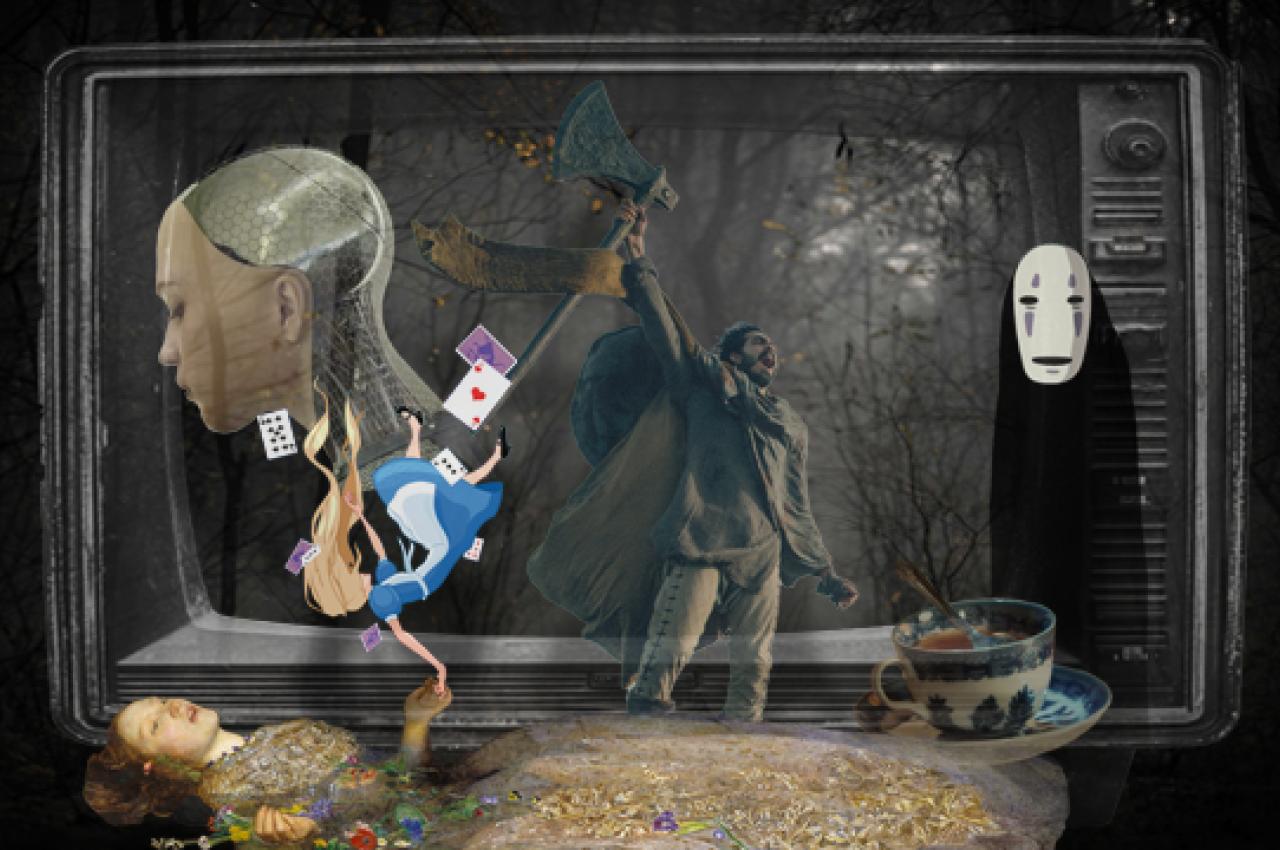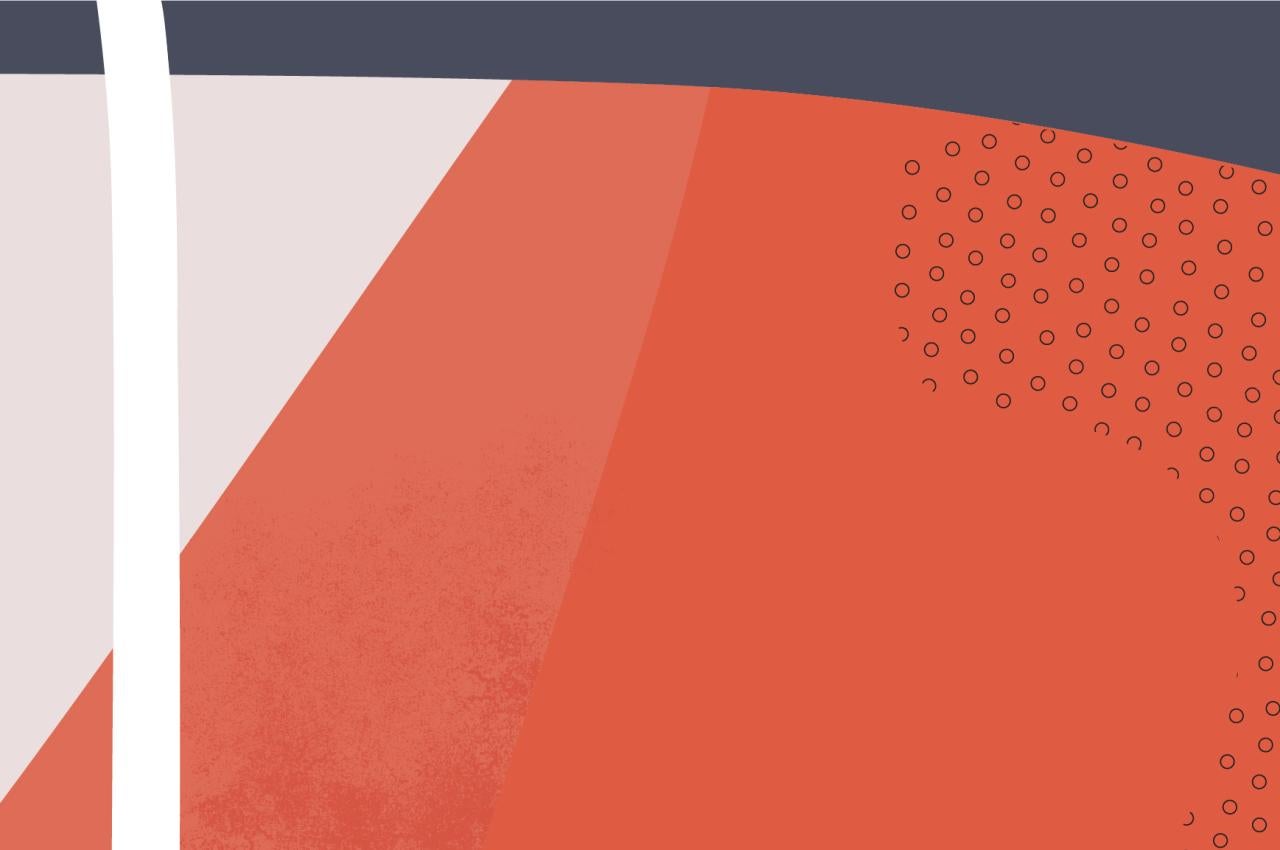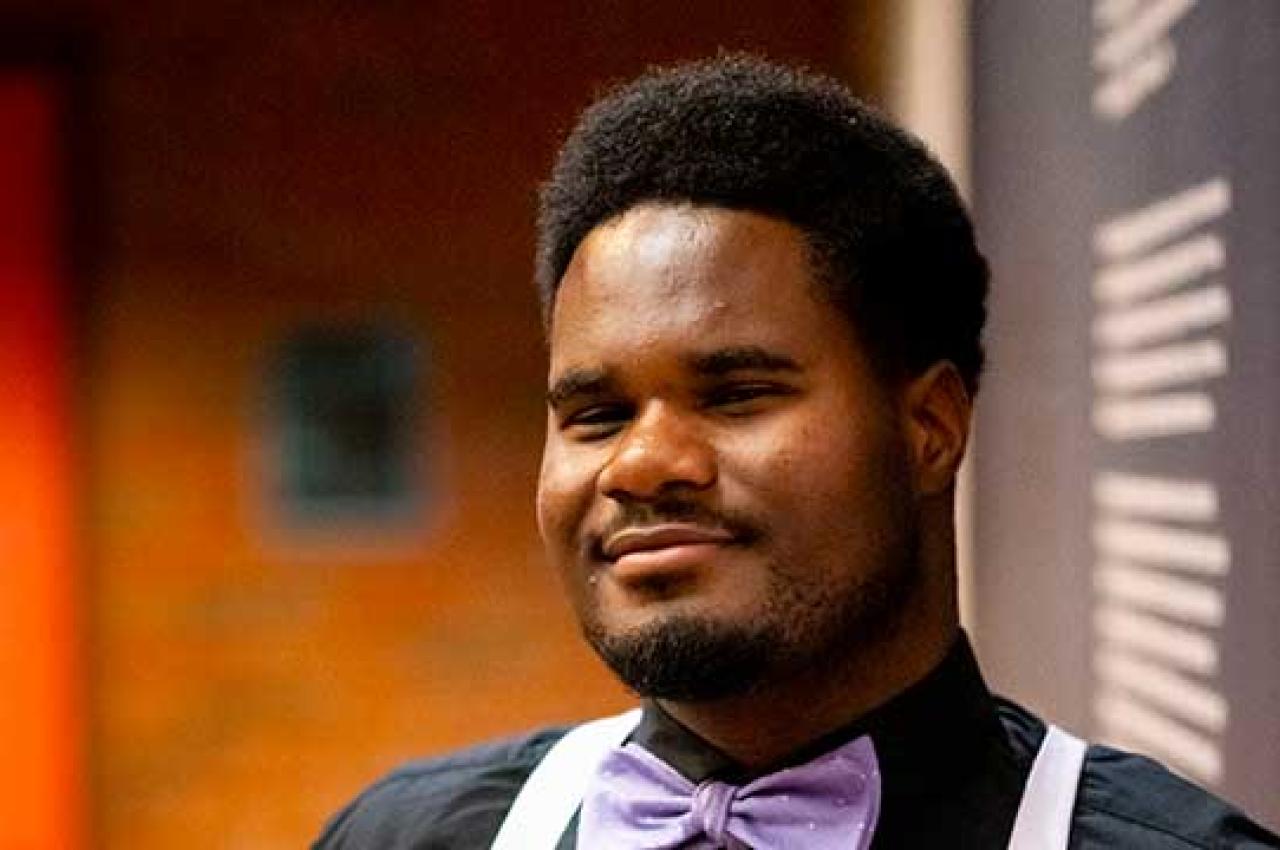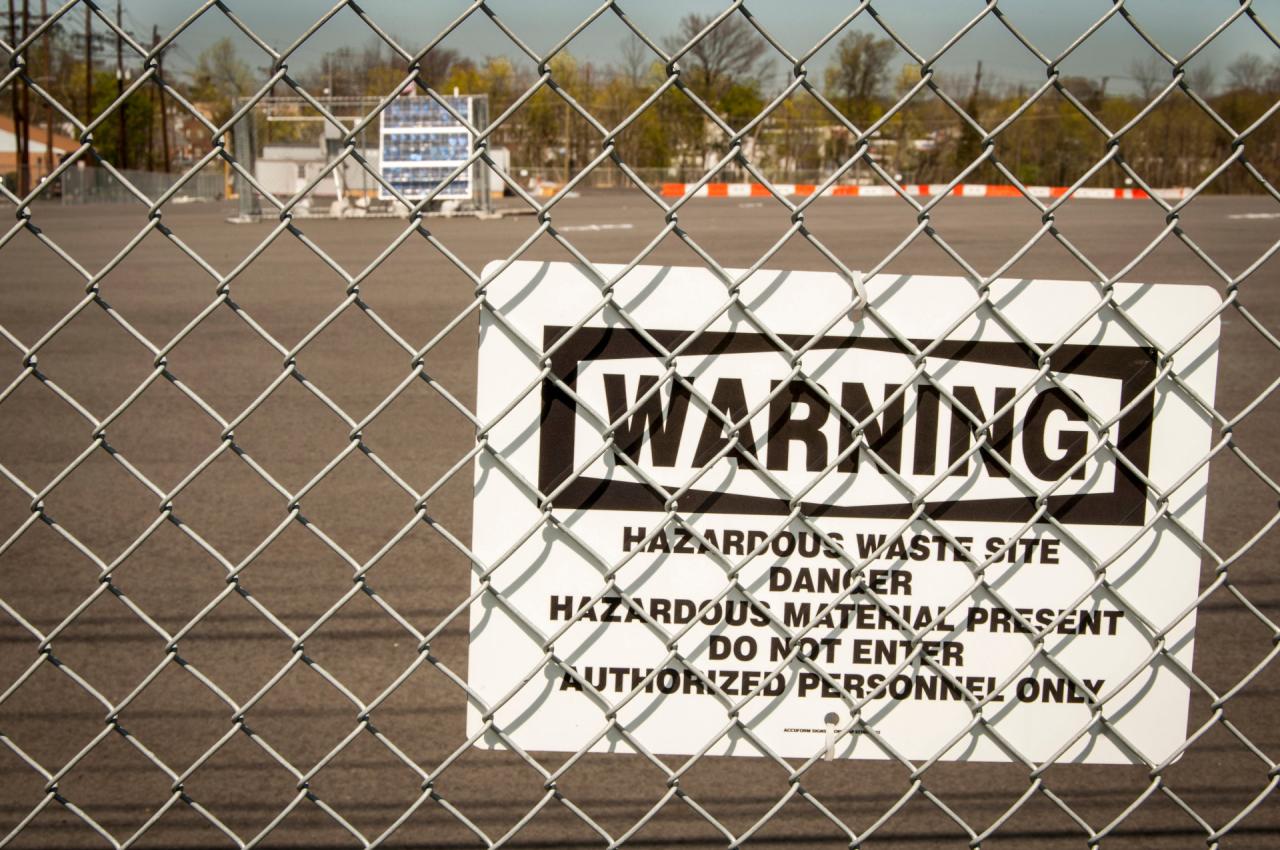These Stories Are Eerie, Uncanny—and Just Right for Anxious Times
Have you ever felt something is eerie? Perhaps an experience seems strange and even frightening, but you don’t know exactly what is so odd.
That sensation is common; it’s been experienced by people and expressed in art across cultures and time periods, according to Tufts professors Susan Napier and Alexandra Shraytekh. The eerie in literature and art is often a reflection of fear or discomfort with change that disrupts our sense of order.
“The eerie is not just a feeling or spectrum of feeling. It’s also a way of knowing and reading the world,” said Shraytekh, Mellon-Bridge Assistant Professor of Arabic and International Literary and Visual Studies.
Napier and Shraytekh teach a course in the School of Arts and Sciences called The Eerie: An Exploration Across Time and Space, which examines the concept of eeriness and the uncanny across countries and cultures. The class’s primary focus is the Middle East and Japan, but it also considers English literature, magical realism from Latin America, Russian animation, and present-day examples. Students explore how awareness of the eerie contributes to the understanding of trauma, ambiguous loss, sexism, racism, and xenophobia in our current society.
A Traumatic Break with the Past
Napier, Goldthwaite Professor of Rhetoric in the Department of International Literary and Cultural Studies, said the aesthetics of what we associate with the eerie in books, shows, and movies today come primarily from the late 18th and early 19th century periods of gothic or dark Romanticism. That’s where we get the imagery of haunted castles and labyrinths and the sense of confusion, no escape, and family secrets.
The imagery and themes reflect the issues of that period, as artists reacted to the Industrial Revolution and ideas of rationalism. “Some theorists suggest this is a time when modernity is coming in, and you have a fear of perhaps the lower classes becoming empowered and then kind of breaking through the castle, something coming up that you wanted to repress,” Napier said.
Eeriness existed before the 19th century, of course. There are ghost stories in ancient Greece, texts as old as the ancient Arabic folktales collected in One Thousand and One Nights, and medieval works like Sir Gawain and the Green Knight that exemplify this uncertainty in the face of the unknown.
But Shraytekh and Napier define our modern understanding of eeriness as a way of yearning for the comforts of the past while being in a state of unease in the present.
“It’s looking at the past through the idea that modernity is this traumatic break with the past that keeps haunting you,” Shraytekh said. “But you also can’t retreat. You have this sort of nostalgia for this imagined authenticity that the past used to entail.”
“We Live in an Eerie Time.”
In turbulent times, feelings of eeriness often go hand-in-hand with discomfort with change.
In addition to the eerie, the professors discuss the theory of the fantastic, a mode of telling a story in which a character who is grounded in reason is then faced with the supernatural, an experience that completely breaks the character’s trust in the way the world works.
“We live in an eerie time right now,” Shraytekh said. “And we live in a fantastic time because both the fantastic and the eerie are ways of talking about social divisiveness and social division. And we are in a complete state of social division here where one group accuses the other constantly of losing its grip on reality.”
“It’s very cloudy times,” Napier said. “And if you think about eerie landscapes, they’re often cloudy, gray, amorphous, and misty. And this is very much part of the 21st century. There have always been eerie times, but I think more and more, we’re just not sure where the future is taking us.”
Napier said the eerie is an ambiguous feeling: You don’t know how to think, how to feel or react. Sigmund Freud’s theory of the uncanny defined this feeling of strangeness, which is evoked when something feels both familiar and unfamiliar at the same time.
“There’s a sense of things being a little bit off,” Napier said. “You don’t know what to believe. You’re kind of losing faith in the big, religious institutions and modernity is coming. Technology, different morals, different politics. It’s all there, and you’re kind of alone trying to figure it out in this strange, ambiguous situation.”
How the Eerie Can be Political
Shraytekh said the eerie is also sometimes presented as beautiful, especially as a way to make violence aesthetically pleasing. One example is Shakespeare’s Ophelia, a character in the play Hamlet who goes mad and drowns after her father is killed by her lover. Ophelia has been depicted as a beautiful and haunting figure across works of art, such as John Everett Millais’s painting from the 1850s.
“Staging the dead woman as a beautiful thing is a political act and a political statement,” Shraytekh said. “There’s this sort of beauty ascribed by mainly male writers to dead women. What are the ethics of thinking that the eerie could be beautiful?”
In Taylor Swift’s latest single, “The Fate of Ophelia,” she sings about avoiding the tragic fate of Ophelia by being in a fulfilling relationship.
“It sounds like she’s really getting away from eeriness,” Napier said. “She’s saying, no, I won’t have that. That’s not going to be my future. I’m going to have something quite different and arguably more wholesome and more viable.”
Jordan Peele’s 2017 film Get Out shows how eeriness can be used to expose societal ills like racism. The horror movie centers around Chris, a Black man who visits his white girlfriend’s parents’ house for the first time. As Chris experiences racism from the family and their friends, he soon discovers secrets beyond his imagination. In the film, there’s an eerie scene where the girlfriend’s mother stirs her teacup and hypnotizes Chris.
“All kinds of stuff are going on under the surface, which clearly the director wants us to be aware of in certain ways, not always obviously. That teacup, which shouldn’t necessarily be an eerie, strange thing, becomes eerie in the circumstances that the movie is creating for us,” Napier said.
The Search for Authenticity
In the modern day, deepfakes and AI images often make reality uncertain and create an “uncanny valley” effect, in which an almost-human entity evokes feelings of discomfort or revulsion.
Sci-fi films like Ex Machina, released in 2014, show the eerie aspect of human-like robots that are in full service of others. But, Shraytekh said, “AI and how eerie images look really take it to another level.”
“It makes people obsessed with the idea of authenticity, which already is this slippery concept that I don’t think we can ever arrive at,” she said. “We’re yearning toward this authenticity that we can’t ever have.”
The eerie often has a liminal quality, like falling down the rabbit hole in Alice in Wonderland. In Hayao Miyazaki’s 2001 Spirited Away, a young girl named Chihiro and her parents stumble upon an abandoned theme park. When her parents mysteriously turn into pigs, the girl finds herself alone in a supernatural realm.
Being in a place with the last vestiges of modernity is often a defining feature of eerie settings in media, Napier said. There’s a lack of trust in the current time because of the imagined certainty that the past provides.
“The eerie itself is a portal to see our world in a more complicated and, oddly enough, maybe more realistic light,” Shraytekh said.
Latest Tufts Now
- Where Does Tufts’ Water Come From?Tufts students and a water sanitation expert talk about the quality of the university’s water and what makes it possible
- ‘I Just Want to Push Myself to Be Better’A member of the men’s step team on the benefits of exploring activities outside of one’s comfort zone
- The Scariest Halloween Candies for Your TeethTart and tangy treats are having a moment. But when it comes to oral health, they hit a sour note
- Why Does Matter Even Exist? Tufts Physicists Help Uncover CluesAnalysis of international physics experiments finds neutrinos may have tipped the matter/antimatter balance at the beginning of the universe
- Addressing Population Disparities Near the Worst Superfund SitesTufts researchers develop a scoring system to prioritize cleanup at polluted sites for most-affected communities
- What Vitamins Should I Take During Menopause for Bone Health?A bone expert at Tufts breaks down which nutrients the body needs most during this phase of life, and what benefits they provide













